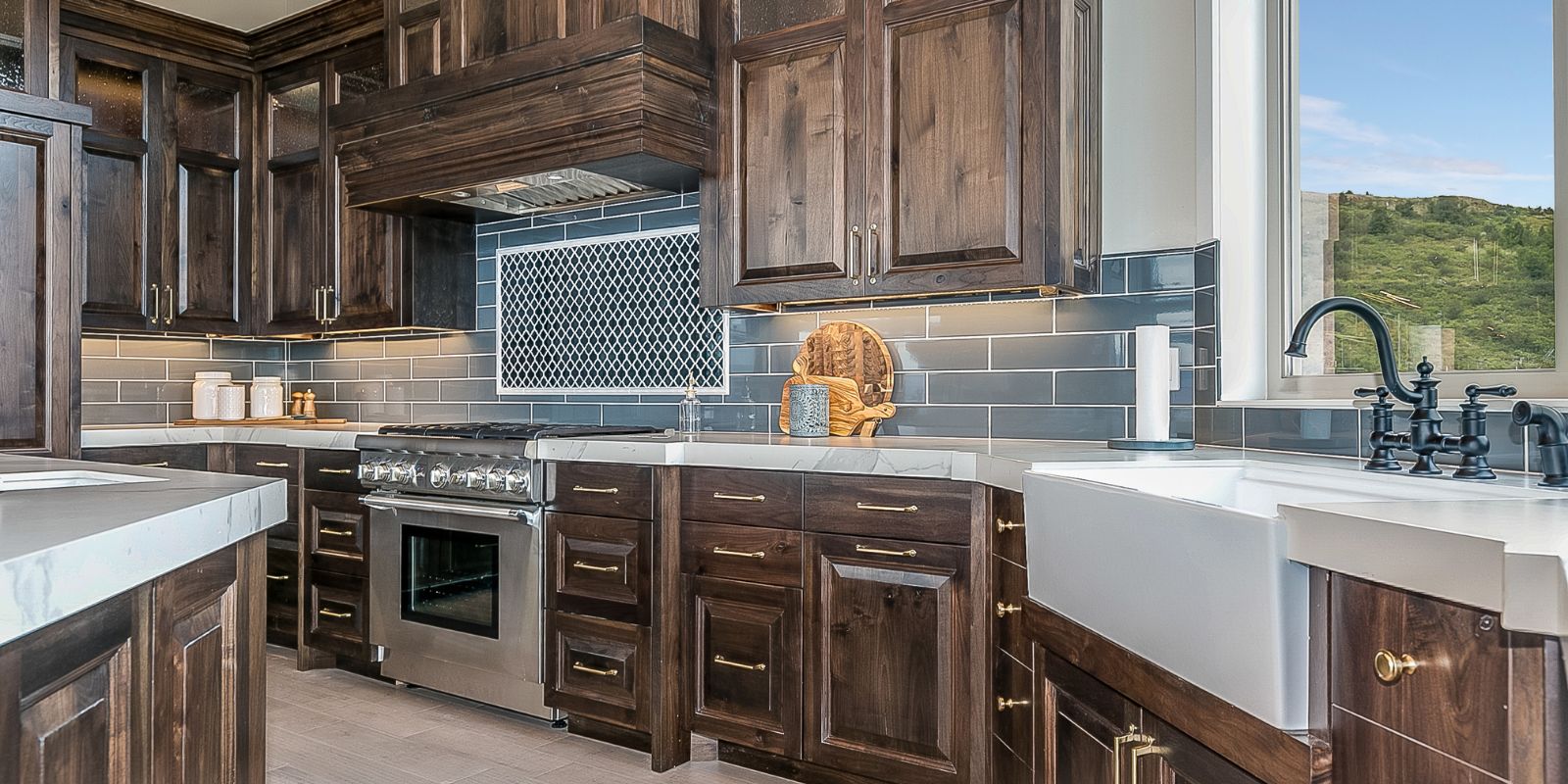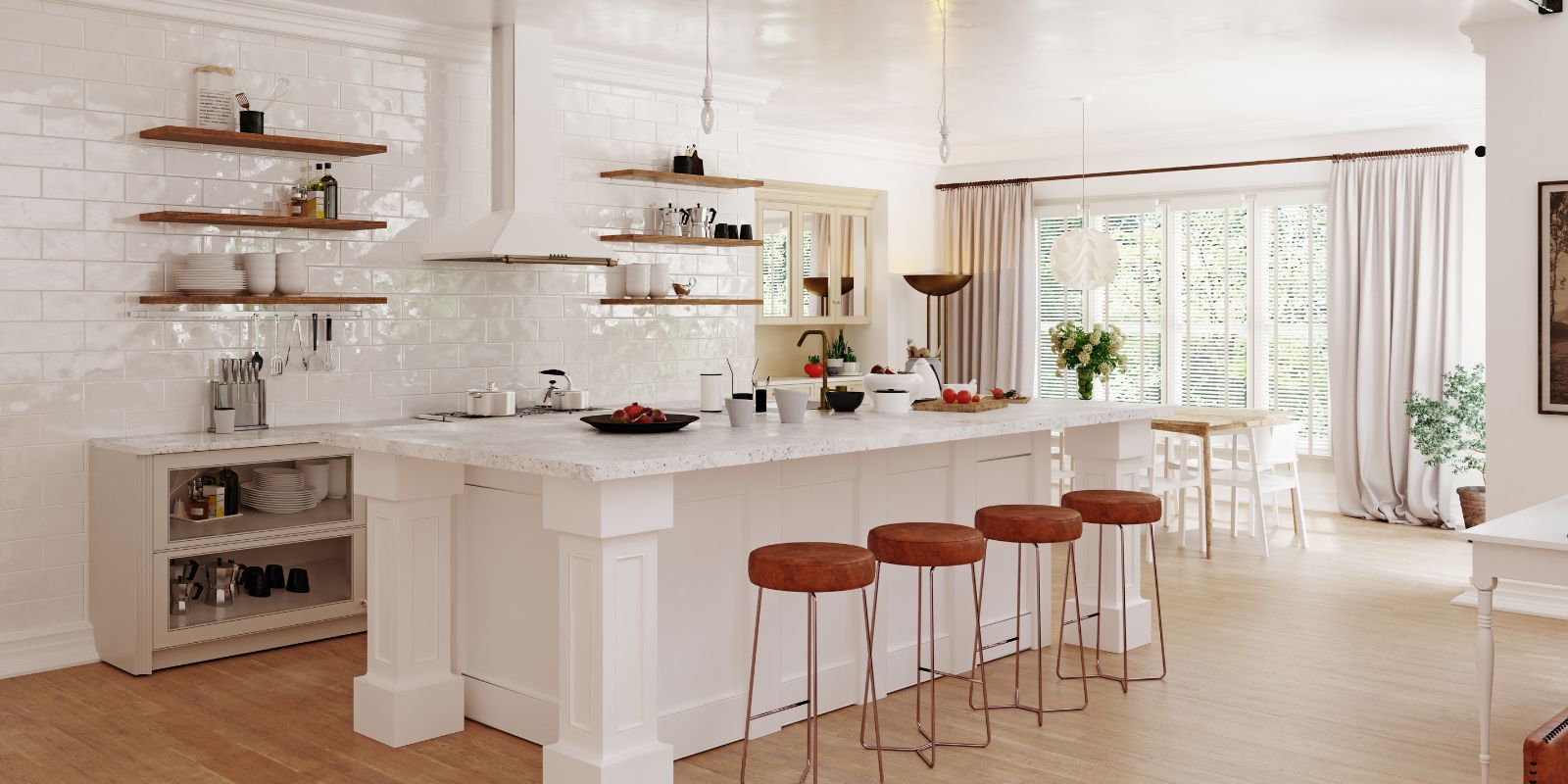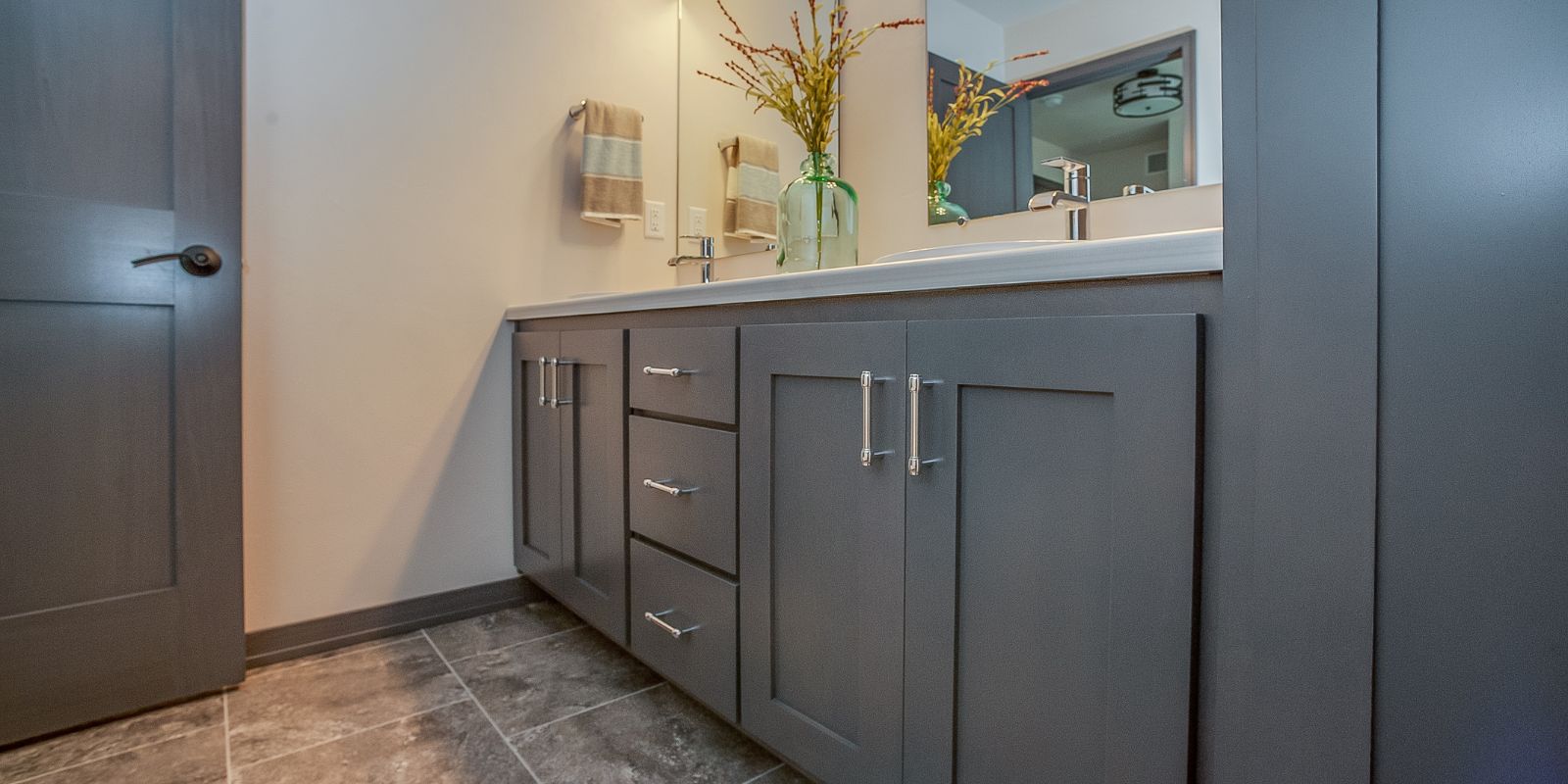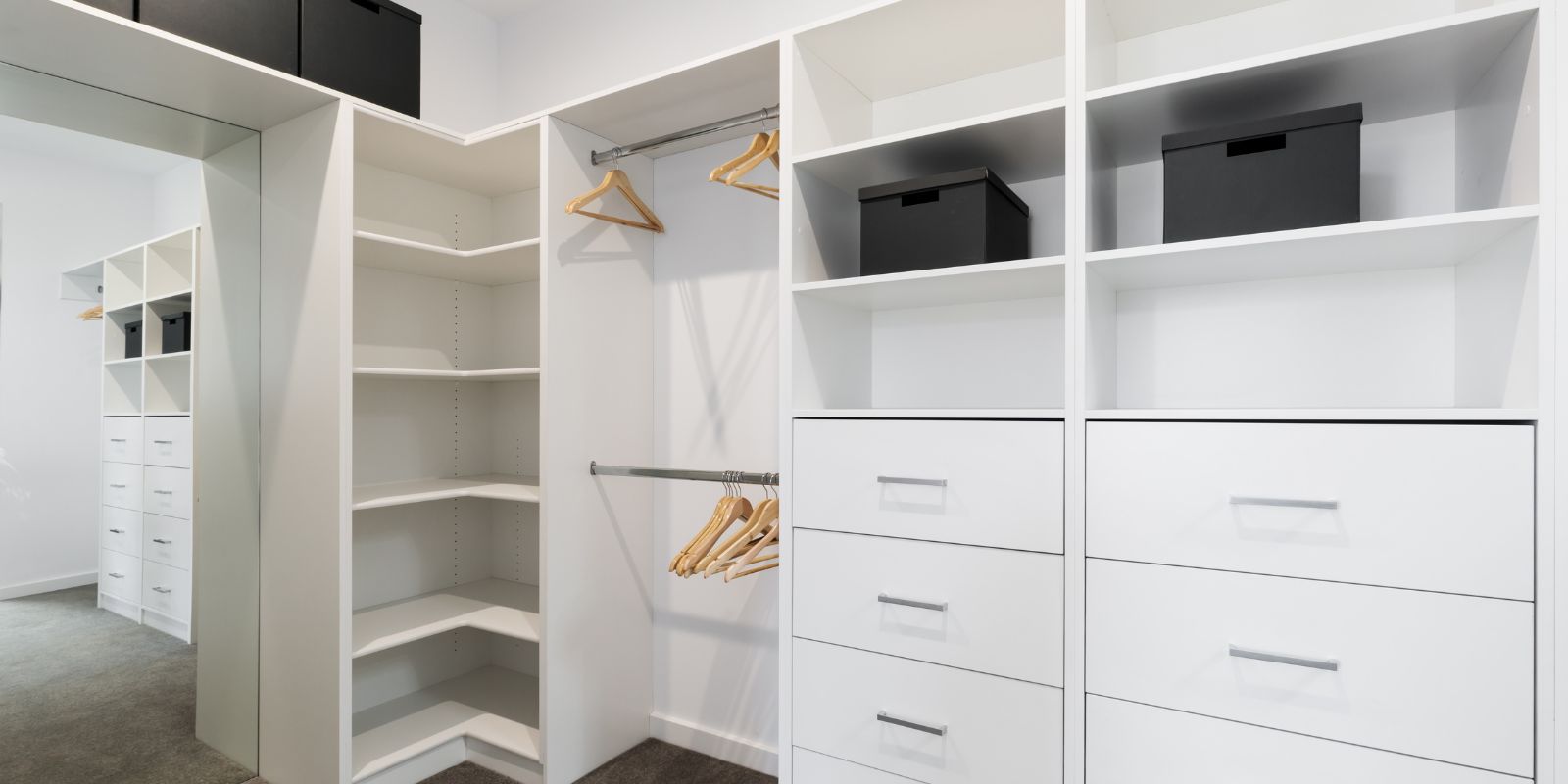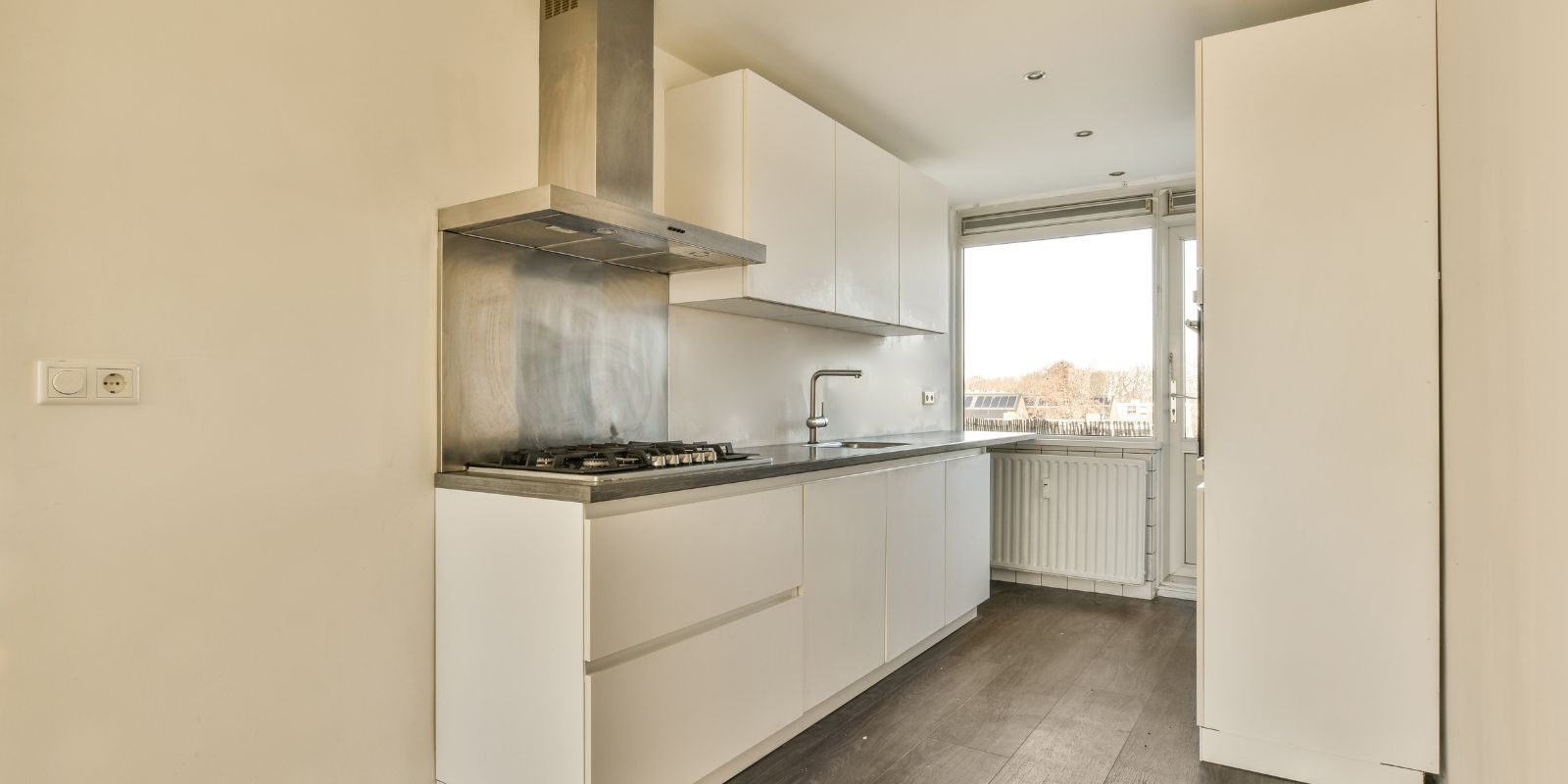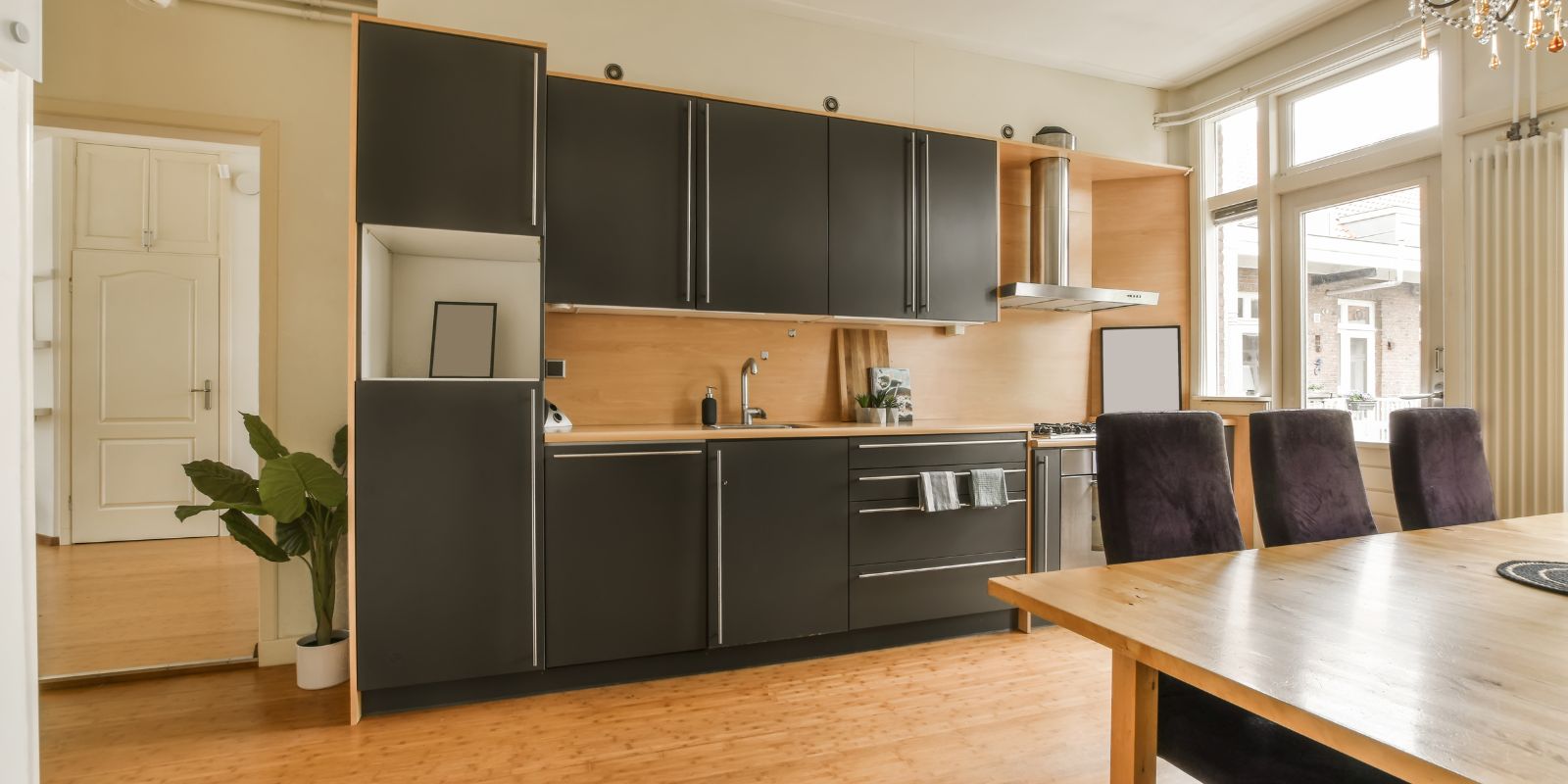Cabinet Finishing and Staining
Table of Contents
- Introduction to Cabinet Finishing and Staining
- Exploring Different Cabinet Finishing Techniques
- Advanced Finishing Options for Cabinets
- High-Performance Lacquers for Durability and Shine
- Automotive Finishes for Ultra-High Gloss
- UV-Cured Finishes for Quick Drying and Eco-Friendliness
- Epoxy Resin for a Glass-Like Finish
- Powder Coating for a Robust Finish
- Metallic Finishes for a Luxurious Look
- Advanced Staining Techniques: Dyes and Tints
- Selecting the Best Finish for Your Cabinets
- DIY Tips for Cabinet Finishing
- Maintenance and Care for Finished Cabinets
- Conclusion
- FAQs
-
- What is the best finish for kitchen cabinets?
- How can I choose between painting and staining my cabinets?
- Can I apply a new finish over old cabinets?
- How do I maintain my newly finished cabinets?
- How often should I refinish my cabinets?
- Is it necessary to sand cabinets before applying a new finish?
- What are eco-friendly options for cabinet finishing?
-
Important Note: Cabinet finishing and staining is quite a large subject. And, while we cover a great deal in this post, we can’t cover it all in a reasonable length. However, we do give you suggestions, in the form of open-ended questions and hints, for further thought and exploration in Google or another search engine of your choice. Just copy and paste the questions or hints into the search bar.
Introduction to Cabinet Finishing and Staining
This post on cabinet finishing and staining is where we delve into the transformative world of cabinet refurbishment. The finish on your cabinets is not just about aesthetics; it’s a crucial factor that determines the longevity, durability, and overall appeal of your cabinetry. Whether you’re aiming for a complete kitchen makeover, refreshing a worn-out bathroom vanity, or simply bringing new life to an antique piece, understanding the art of cabinet finishing and staining is key.
In this guide, we’ll explore the myriad of finishing techniques that can revitalize your cabinets. From the rich, natural beauty of wood stains to the sleek, modern appeal of painted finishes, each method offers a unique way to enhance your space. We’ll provide you with expert tips, step-by-step techniques, and professional insights to help you choose and apply the right finish for your cabinetry.
Cabinet finishing and staining are not just about changing the color; it’s about crafting an atmosphere, setting a mood, and creating a statement in your home. Whether you’re a seasoned DIY enthusiast or a beginner looking to tackle your first project, this guide will equip you with the knowledge and confidence to transform your cabinets into works of art.
So, let’s embark on this journey of cabinet transformation, where we’ll uncover the secrets to achieving the perfect finish and learn how to make your cabinetry not just functional but also a reflection of your personal style and home decor.
Exploring Different Cabinet Finishing Techniques
When it comes to cabinet finishing, there’s a wide array of techniques available, each offering its unique charm and benefits. This section will explore some of the most popular and effective cabinet finishing methods, helping you make an informed decision about which technique best suits your cabinetry and overall home decor.
Staining: Enhancing Wood’s Natural Beauty
- Overview: Staining is ideal for highlighting the natural grain and character of wood. It penetrates the wood, providing a rich, deep color while still showcasing its inherent beauty.
- Types of Stains: Discuss various types of stains, like oil-based, water-based, and gel stains, and their respective impacts on different wood types.
Painting: A Versatile and Transformative Option
- Benefits: Painting cabinets can completely alter their look, offering a wide range of colors and finishes. It’s perfect for creating a modern or specific thematic appearance.
- Techniques: Hint: Cover the steps involved in painting cabinets, including surface preparation, primer application, and choosing the right type of paint (matte, semi-gloss, etc.).
Glazing for Depth and Dimension
- Application: Glazing involves applying a translucent layer over a base coat, which settles into the cabinet’s grooves and recesses, creating depth and an antique look.
- Customization: Hint: Explore how different glaze colors can be used to complement or contrast the base coat for various effects.
Distressing for an Antique Look
- Technique: Distressing involves intentionally adding signs of wear and tear. Techniques include sanding edges, using tools to create dents, and layering paint colors.
- Aesthetic: This technique is suitable for creating a rustic or vintage feel, particularly popular in farmhouse or shabby chic decor styles.
Varnishing for Protection and Shine
- Purpose: Varnish is used for its protective qualities, providing a hard, durable surface that’s resistant to moisture and wear.
- Varieties: Hint: Discuss the different sheens available (gloss, semi-gloss, satin) and how they can affect the cabinet’s overall look.
Lacquer for a High-Gloss Finish
- Characteristics: Lacquer is known for its smooth, high-gloss finish, offering a sleek and contemporary look. It’s also durable and resistant to staining.
- Application Tips: Hint: Provide insights into the application process, which typically involves spraying, and the importance of ventilation due to strong fumes.
Using Oil and Wax for a Natural Finish
- Natural Appeal: Oils and waxes are ideal for those seeking a more natural, low-sheen finish. They penetrate the wood and enhance its natural color.
- Maintenance: Hint: Discuss the regular maintenance required to keep these finishes looking their best.
By exploring these different cabinet finishing techniques, you can decide which method aligns with your aesthetic preferences, practical needs, and the style of your home. Whether aiming for a dramatic transformation or a subtle enhancement, these techniques offer a pathway to achieving your desired cabinetry look.
Here is a cool video on The Easy Way to Refinish Kitchen Cabinets:
Advanced Finishing Options for Cabinets
For those looking to elevate their cabinetry to a higher level of sophistication and durability, advanced finishing options offer a range of possibilities. These techniques can enhance both the aesthetic appeal and functionality of your cabinets, making them not only beautiful but also resilient against everyday wear and tear.
High-Performance Lacquers for Durability and Shine
- About High-Performance Lacquers: These are specialized finishes that provide an exceptionally durable and glossy surface, ideal for high-traffic areas or where you want a strikingly sleek look.
- Application Techniques: Hint: Discusses the precision required in applying lacquer, often involving professional spraying equipment for a smooth, flawless finish.
Automotive Finishes for Ultra-High Gloss
- Innovative Use of Automotive Finishes: Borrowing from the automotive industry, these finishes offer an ultra-high gloss, vibrant colors, and unmatched durability.
- Considerations: Hint: Explores the unique application process and the level of expertise required for this type of finish.
UV-Cured Finishes for Quick Drying and Eco-Friendliness
- Benefits of UV-Cured Finishes: These are fast-drying, environmentally friendly finishes cured using ultraviolet light. They are known for their hardness and resistance to solvents and abrasions.
- Application Process: Hint: Details on how UV-cured finishes are applied and cured, emphasizing the specialized equipment and techniques used.
Epoxy Resin for a Glass-Like Finish
- Characteristics of Epoxy Resin: Known for creating a thick, glass-like finish, epoxy resin can be used on countertops and cabinet surfaces for a dramatic and contemporary look.
- DIY Tips: Hint: Offers guidance on mixing, pouring, and curing epoxy resin, as well as the necessary precautions for working with this material.
Powder Coating for a Robust Finish
- Advantages of Powder Coating: A dry finishing process that provides a tough, even coating more resistant to chipping, scratching, and fading than traditional paints.
- Suitability and Process: Hint: Discuss the types of cabinets that can be powder-coated and the electrostatic application process involved.
Metallic Finishes for a Luxurious Look
- Exploring Metallic Finishes: These finishes incorporate metal particles, such as bronze, copper, or silver, to give cabinets a luxurious, shimmering appearance.
- Application Techniques: Hint: Covers how to apply metallic finishes to achieve different effects, from subtle sheens to bold, reflective surfaces.
Advanced Staining Techniques: Dyes and Tints
- Dyes vs. Traditional Stains: Hint: Explores the use of dyes for a more uniform and vibrant color compared to traditional stains, especially on woods with less pronounced grains.
- Custom Tinting: Hint: Discuss how to mix and apply custom tints for unique, personalized cabinet colors.
These advanced finishing options open up a world of possibilities for those looking to push the boundaries of traditional cabinet design. They offer a way to achieve not only custom aesthetics but also enhanced durability and functionality, making them a worthwhile consideration for any high-end cabinetry project.
Selecting the Best Finish for Your Cabinets
Choosing the right finish for your cabinets is more than just an aesthetic decision; it’s about finding the perfect balance between style, practicality, and longevity. This section will guide you through key considerations to help you select the best finish that aligns with your needs and enhances your cabinetry.
Consider Your Lifestyle and Cabinet Usage
- Assessing Durability Needs: High-traffic areas like kitchens may require finishes that can withstand frequent use and cleaning, such as polyurethane or high-quality latex paints.
- Accounting for Environmental Factors: In areas prone to moisture, such as bathrooms, opt for moisture-resistant finishes like varnish or lacquer.
Aligning with Your Aesthetic Preferences
- Matching the Style of Your Home: Choose finishes that complement the overall decor. For a traditional look, stains or oil finishes may be ideal, while contemporary styles may benefit from painted or lacquered finishes.
- Exploring Color and Sheen Options: Painted finishes offer a wide color range, whereas stains accentuate the natural wood grain. Sheen levels can vary from matte to high gloss, impacting the overall feel of the room.
Health and Environmental Considerations
- Opting for Eco-Friendly Choices: Consider low-VOC or water-based finishes for a healthier indoor environment and reduced environmental impact.
- Natural Finishes: For those seeking environmentally friendly options, natural oil finishes or wax may be desirable.
Budget Considerations
- Cost vs. Value: While certain finishes like lacquer or high-end paints may be more costly, they can offer better durability and a more polished look, potentially saving money in the long run.
- DIY vs. Professional Finishing: Hint: Assess whether the finish requires professional application, which can add to the overall cost, or if it’s a project you can confidently tackle yourself.
Maintenance and Long-Term Care
- Ease of Maintenance: Some finishes, like certain paints and varnishes, are easier to clean and maintain, while others may require more care or regular touch-ups.
- Longevity and Wear: Consider how well the finish will age over time and its resistance to wear, especially in high-use areas.
Application Process and Required Skill
- DIY Friendliness: If you plan to apply the finish yourself, consider your skill level and the complexity of the application process. Some finishes, like brush-on stains or paints, are more beginner-friendly.
- Tools and Equipment Needed: Ensure you have the necessary tools and equipment for the application, and consider if the finish requires special techniques, like spraying for lacquer.
Selecting the best finish for your cabinets is a thoughtful process that involves considering various factors, including durability, style, health, budget, and maintenance. By carefully weighing these aspects, you can choose a finish that not only looks great but also meets your functional needs and enhances the longevity of your cabinetry.
DIY Tips for Cabinet Finishing
Taking on a cabinet finishing project can be a gratifying DIY endeavor. With the right approach and techniques, you can give your cabinets a professional-looking finish. Here are some essential tips to guide you through the process.
Proper Preparation is Key
- Cleaning and Sanding: Start by thoroughly cleaning your cabinets. Then, sand them to create a smooth surface for the new finish. This step is crucial for both painting and staining.
- Repair Any Damage: Before applying any finish, make sure to repair scratches, dents, or other damage.
Check out this video on Tips for Staining Cabinets Quickly:
Choosing the Right Materials and Tools
- Selecting the Right Finish: Based on your research, choose a finish that suits your cabinets and matches your desired look. Be it paint, stain, varnish, or lacquer, each has its specific application method and effect.
- Investing in Quality Brushes and Rollers: High-quality brushes and rollers can significantly affect the outcome. For water-based finishes, synthetic brushes are ideal, while natural bristles are better for oil-based products.
Applying the Finish
- Testing First: Always test the finish on a small, inconspicuous area or a spare piece of wood to ensure it gives the desired result.
- Even Application: Apply the finish evenly, following the grain of the wood. Avoid over-application to prevent drips and uneven coats.
- Sanding Between Coats: For painted or varnished surfaces, lightly sanding between coats with fine-grit sandpaper can ensure a smooth finish.
Ensuring Proper Ventilation
- Safety First: Many finishes emit fumes, so work in a well-ventilated area. Wear protective gear like masks and gloves, especially when working with solvent-based finishes.
Patience During Drying
- Allow Adequate Drying Time: Rushing the drying process can ruin a good finish. Be patient and allow each coat to dry thoroughly before applying the next one.
Finishing Touches
- Final Inspection: Once the final coat is dry, inspect your cabinets for any missed spots or imperfections.
- Reassembling Hardware: If you removed any hardware, reattach it carefully once the finish is completely dry.
Maintenance
- Regular Care: Maintain the new finish by regular cleaning and touch-ups as needed. This helps preserve the look and prolong the life of your cabinets.
By following these DIY tips, you can achieve a satisfying and professional-looking finish on your cabinets. Remember, the key to a successful cabinet-finishing project lies in thorough preparation, careful application, and patience throughout the process.
Please see this video on 3 Basic Finishes:
Maintenance and Care for Finished Cabinets
After investing time and effort into finishing your cabinets, maintaining their appearance and extending their longevity becomes essential. Here are some key tips to ensure your finished cabinets remain in top condition.
Regular Cleaning is Crucial
- Gentle Cleaning Routine: Use a soft cloth or sponge with mild soap and water to clean your cabinets. Avoid harsh chemicals or abrasive materials that can damage the finish.
- Dealing with Spills Immediately: Spills and stains should be wiped up promptly to prevent any potential damage, especially on wood-stained cabinets.
Protecting the Finish
- Avoiding Excessive Moisture: In areas like kitchens and bathrooms, make sure to manage humidity and moisture levels, as excessive moisture can damage the cabinet finish.
- Use of Protective Liners: In high-use areas, consider using shelf liners to protect the cabinet’s interior from scratches and spills.
Periodic Check-Ups and Touch-Ups
- Inspect for Damage: Regularly check for any chips, cracks, or wear in the finish. Address these issues promptly with touch-up paint or stain.
- Tighten Hardware: Loose handles or hinges can lead to misalignment and damage. Tighten them periodically to ensure proper function.
Avoiding Direct Sunlight
- Preventing Fading: Prolonged exposure to direct sunlight can cause fading or discoloration, especially in stained cabinets. Use window treatments to limit exposure to direct sunlight.
Proper Handling and Usage
- Gentle Operation: Avoid slamming cabinet doors or drawers. Gentle use can prevent damage to the finish and the cabinet’s structure.
- Lifting, Not Dragging: When moving items in and out of cabinets, lift them instead of dragging to avoid scratches.
Seasonal Adjustments
- Wood Movement: Wood cabinets can expand and contract with changes in humidity and temperature. Adjust hinges and drawer slides as needed to ensure smooth operation.
Long-Term Care
- Reapplying Finish if Needed: Over time, you might need to reapply finish to certain areas, especially in high-touch spots like handles and edges.
By following these maintenance and care tips, your finished cabinets will not only look great but will also stand the test of time, maintaining their beauty and functionality for years to come. Regular upkeep is the key to ensuring that your cabinets remain a highlight of your home’s interior.
Conclusion
As we wrap up our comprehensive guide on “Transform Your Cabinets: Expert Tips on Finishing and Staining,” it’s evident that the right finish can significantly elevate the look and feel of your cabinets. We’ve explored a variety of techniques, from staining to advanced finishes, each offering its unique aesthetic and protective qualities. Whether you’re a DIY enthusiast or planning to hire a professional, understanding these finishing techniques is crucial in achieving the desired outcome for your cabinetry.
The journey of refinishing your cabinets is not just about enhancing their appearance; it’s about extending their lifespan, protecting them from wear and tear, and tailoring them to fit your personal style and home decor. With the knowledge gained from this guide, you’re now equipped to make informed decisions about the best finishing options for your cabinetry project.
Remember, the key to successful cabinet finishing lies in careful planning, proper application, and regular maintenance. Whether you choose to stain, paint, lacquer, or apply any other finish, each method requires attention to detail and a commitment to quality. By following these expert tips and maintaining your finished cabinets, you’ll ensure that they remain a beautiful and functional part of your home for years to come.
In the world of home improvement, the art of cabinet finishing and staining stands as a testament to the transformative power of a well-executed project. So, embark on this rewarding journey, and watch as your cabinets transform, enhancing the beauty and character of your home.
FAQs
Here are some frequently asked questions that can help address common concerns and queries about cabinet finishing and staining:
What is the best finish for kitchen cabinets?
- The best finish for kitchen cabinets depends on your aesthetic preference and functional needs. For high-traffic areas, durable finishes like polyurethane or high-quality latex paints are recommended. If you prefer a natural wood look, consider oil-based stains or clear varnishes.
How can I choose between painting and staining my cabinets?
- If you want to showcase the natural wood grain, staining is the best option. Painting is ideal for a more uniform and diverse color range. Consider the style of your home and the level of maintenance you’re willing to commit to.
Can I apply a new finish over old cabinets?
- Yes, you can apply a new finish over old cabinets, but proper preparation is crucial. This includes cleaning, sanding, and possibly priming, depending on the type of new finish and the condition of your cabinets.
How do I maintain my newly finished cabinets?
- Regular cleaning with a mild detergent and soft cloth is essential. Avoid harsh chemicals and excessive moisture. For painted cabinets, touch-ups may be necessary over time, and for stained cabinets, reapplying a protective topcoat can maintain their look.
How often should I refinish my cabinets?
- The frequency of refinishing cabinets depends on their usage and the type of finish. Generally, cabinets may need refinishing every 5 to 10 years, but high-traffic areas or lesser-quality finishes might require more frequent attention.
Is it necessary to sand cabinets before applying a new finish?
- Sanding is typically recommended before applying a new finish, especially if you’re changing the type of finish or if the old surface is damaged or uneven. It helps in creating a smooth base for the new finish to adhere to.
What are eco-friendly options for cabinet finishing?
- Water-based finishes, low-VOC paints, and natural oils or waxes are eco-friendly options. They emit fewer harmful chemicals and are better for indoor air quality and the environment.
By addressing these FAQs, you can gain a better understanding of the nuances of cabinet finishing and staining, helping you achieve the best results for your cabinetry project.
